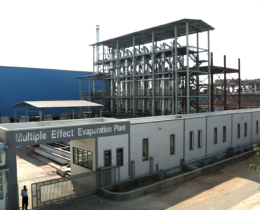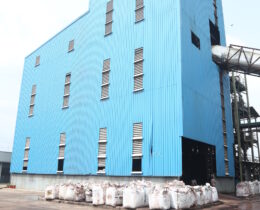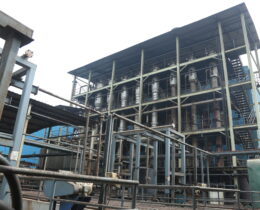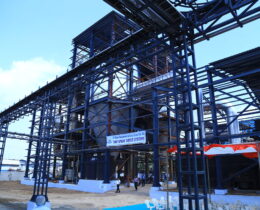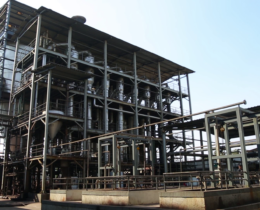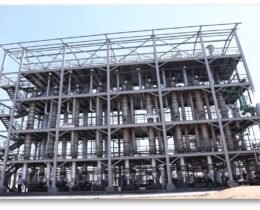Multiple-Effect Evaporator (M.E.E.) Working Principle
Evaporators are kind of heat transfer equipments where the transfer mechanism is controlled by natural convection or forced convection. A solution containing a desired product is feed into the evaporator and it is heated by a heat source like steam. Because of the applied heat, the water in the solution is converted into vapour and is condensed while the concentrated solution is either removed or feed into a second evaporator for further concentration. If a single evaporator is used for the concentration of any solution, it is called a single effect evaporator system and if more than one evaporator is used for the concentration of any solution, it is called a multiple effect evaporator system. In a multiple effect evaporator the vapour from one evaporator is fed into the steam chest of the other evaporator. In such a system, the heat from the original steam fed into the system is reused in the successive effects.
| SR. NO. | PARTICULARS |
|---|---|
| Evaporators | 8 effects |
| Boiler | 5 MT – Solid fuel (Imported Coal) |
| Registered Members | 223 |
| Total Project Cost | Rs. 15 crores |
Acceptance Criteria For M.E.E. Feed Waste Water
- PH : 6.5 TO 8.5
- TSS: <10PPM
- TDS: 10% TO 20%
- C.O.D.: UP TO 100000 PPM
- NH3N: UP TO 500 PPM
Installation of Software,Online Mobile Application for accepting And Rejecting tankers For the treatment of concentrated effluent at Mee & spray Dryer.
Spray Dryer
- Design specifications: The design basis for the Spray Dryer Systems, having total capacity to treat 624 M3/Day at the total cost of Rs. 18 crores,
- Spray drying is the transformation of feed from a fluid state into a dried particulate form by spraying the feed into a hot drying medium. A spray dryer operates on convection mode. The principle of working is moisture removal by application of heat to the feed product and controlling the humidity of the drying medium. Here, the uniqueness is that the evaporation of moisture is promoted by spraying the feed into a heated atmosphere, resulting in improved drying rate. The mechanism can be better understood, when the spray drying process is divided into its constituent unit operations. A liquid feed entering the spray dryer undergoes a series of transformations before it becomes powder. The changes are due to the influence of each of the four stages involved in spray drying, namely,
- Atomization of the feed solution
- Contact of spray with the hot air
- Evaporation of moisture
- Particle separation.
Acceptance Criteria For Spray Dryer Feed Waste Water
- PH : 6.5 TO 8.5
- TSS: <10PPM
- TDS: 20% TO 35%
- C.O.D.: UP TO 100000 PPM
- NH3N: UP TO 10000 PPM




